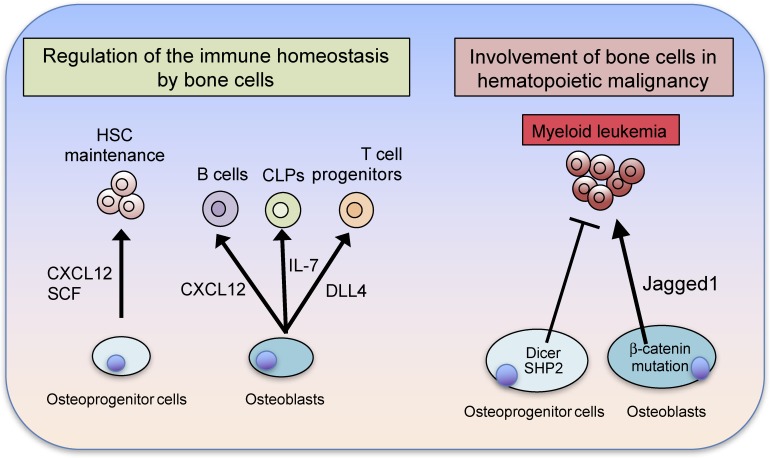Figure 4.
(Color online) Immune regulation by bone cells. Bone cells critically contribute to the immune homeostasis that takes place in the bone marrow microenvironment. Osteoprogenitors, including leptin receptor-expressing (LepR+) cells and CXCL12-abundant reticular (CAR) cells support HSCs by producing SCF and CXCL12. Osteoblasts produce IL-7, delta-like 4 (DLL4) and CXCL12 to support common lymphoid progenitors (CLPs), T cell progenitors and B cells, respectively. Alterations in osteogenic cells predispose them toward the development of hematologic malignancy. Deletion of Dicer in osteoprogenitors leads to the development of myeloid leukemia. The constitutive activation of β-catenin in osteoblasts increases the expression of the Notch ligand Jagged1 in osteoblasts, leading to the development of myeloid leukemia. The activating mutations of Src homology phosphatase 2 (SHP2) in osteoprogenitor cells result in the development of myeloid leukemia. Thus, osteoblast lineage cells importantly contribute to the suppression of hematologic malignancy.

